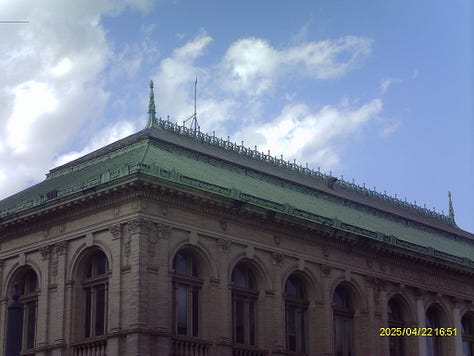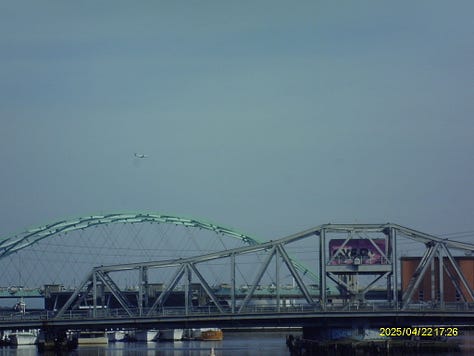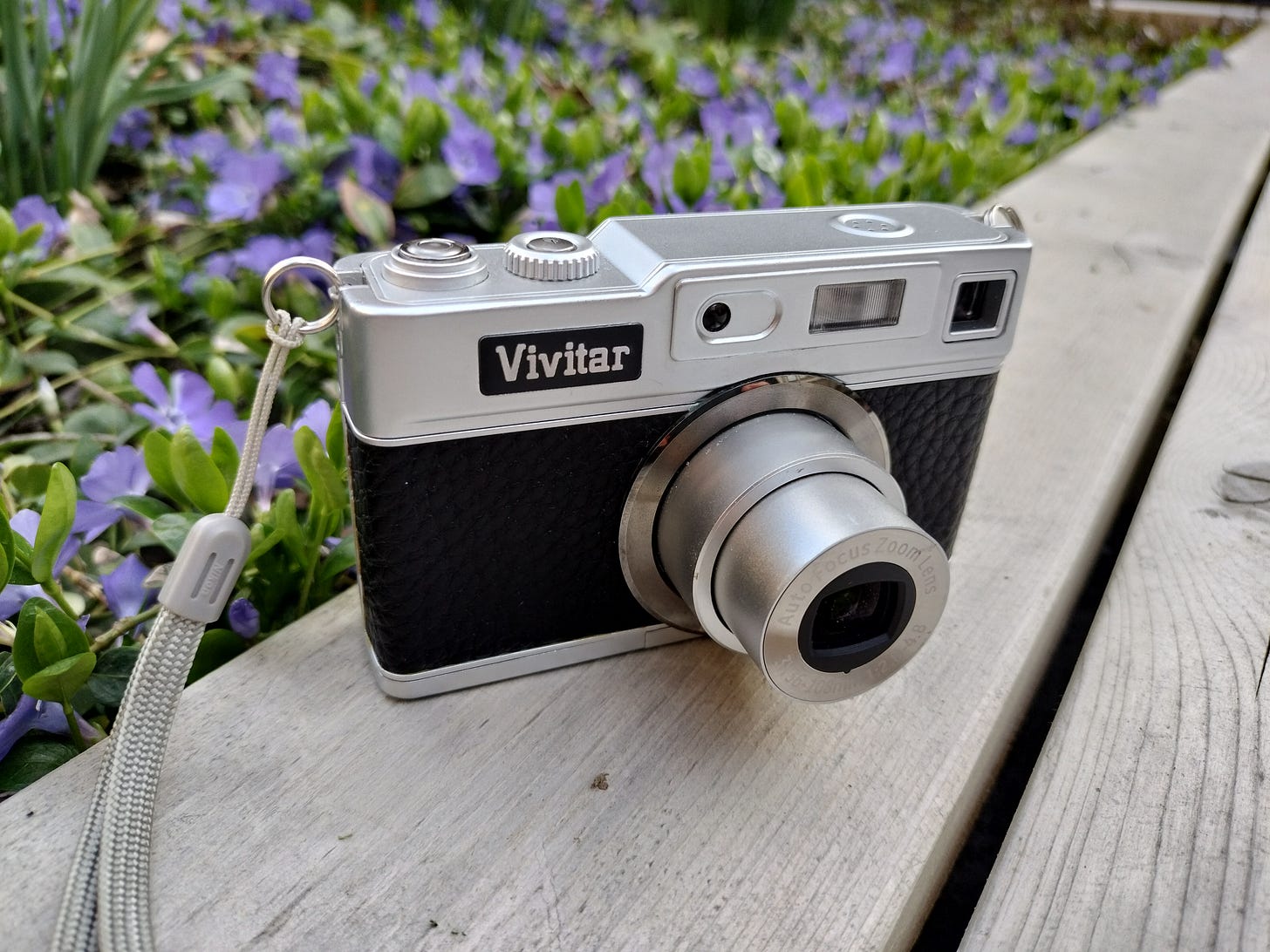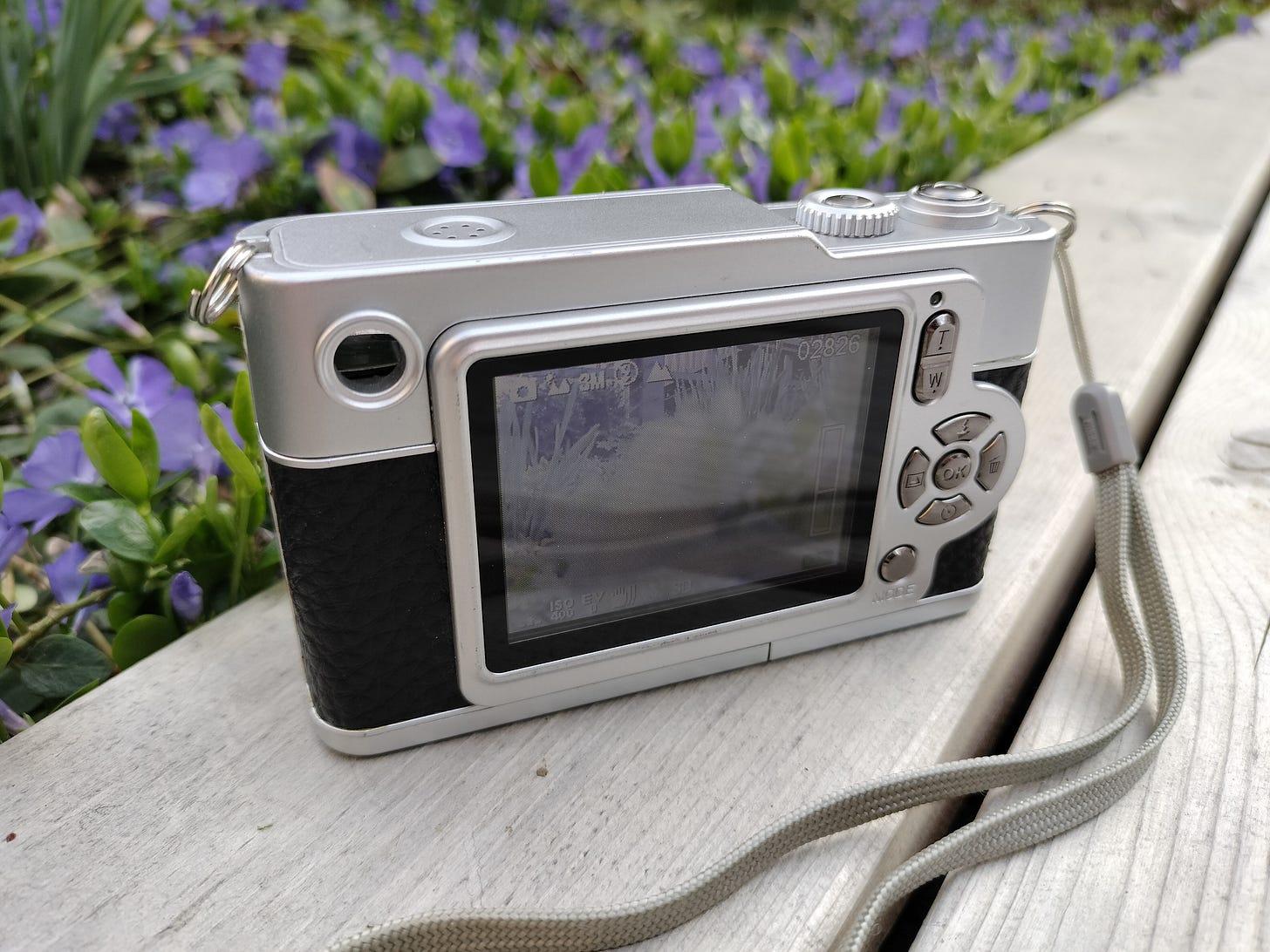The Vivitar Vivicam 8027, a budget 8.1MP camera released in 2009, instantly struck me as interesting, simply because it carries the Vivitar name proudly on the front and doesn’t look like a bland, cheap brick of thin painted plastic.
Vivitar, in the past, may have produced some decent film cameras, lenses, and accessories, but the digital revolution and enshittification were not kind to the company, after the brand was sold, resold, bankrupt, etc. over the years. You might, as I do, associate the brand with the lowest of low quality digital cameras. This model was manufactured, like most of the other Vivitar digital cameras you have probably seen lately, by Sakar, a prolific manufacturer of low and mid-range digital cameras that carry any number of brand names. Bearing a tenuous resemblance to a plethora of legendary rangefinder cameras, it almost seems cursed how out of place the Vivitar badge looks on this model. I saw it on an auction site recently and picked it up to see what its deal was.
Holding the camera in your hand, though, all doubt whether this is indeed a cheap plastic camera is thrown out the window. The body DOES have some thin aluminum plates glued to the silver painted plastic frame to make it feel sturdy and cool to the touch, which does elevate the feel a bit. The imitation leather is also a stick-on decal, which is a step up from the molded plastic details I was expecting. It does have significantly more weight to it than I would have expected, which might be due to the zoom mechanism, or potentially internal weights (I would have to pull the camera apart to look for weights, if I ever do that I’ll come update here)
The Specs
Sensor - 8.1 MP (3264x2448)
Shutter Speed - 2 - 1/2000 seconds
ISO - 100, 200, 400
Lens - 36-108mm, f/2.8-4.8 (3x zoom)
Memory - SDHC Card (Up to 8GB)
Battery - Lithium rechargeable (type BL-5B)
Recharges via Mini USB port
The Lens
The business end of the camera contains a 3x optical zoom lens. While the zooming action is quick, smooth, and surprisingly quiet, the low zoom level of only 3x leaves something to be desired. There is a flash, but it is relatively small and doesn’t seem powerful enough for more than close-up shots. There is an “anti-shake” technology built into the camera, which MUST be digital, I can’t think of any way that there’d be an optical stabilization mechanism in such an inexpensive camera. The anti-shake does seem to work, though. See below, 2 similar photos shot handheld at full 3x zoom. You can see some deformation in the church tower from rolling shutter effects in the right photo, which has anti-shake off. Even the live-view in the viewfinder, it was visually obvious the anti-shake was doing something. Another interesting note is how 2 photos taken mere seconds apart can look so different. The color in the right photo is slightly pink-hued, and the exposure is slightly higher.
The Controls
The back of the camera sports a relatively large 2.4” LCD screen, a 4-way d-pad with a center button, a single mode button, 2 zoom buttons, and a viewfinder.
I am normally a huge fan of cameras with viewfinders, and love to shoot without the LCD turned on, but this one is just plain useless, and I think the designers knew it because you can’t even turn the LCD off. The viewfinder barely shows an accurate rendition of the field of view at 1x zoom, but then, when you zoom, the viewfinder doesn’t follow, so there’s no way to know how far you’re zoomed in. I am fairly certain the viewfinder was added as a novelty, or as a marketing gimmick to be able to say that the camera has an optical viewfinder. I thought maybe mine might just be broken, but I have looked really hard at my camera, and have come to the conclusion that it is simply not designed to zoom with the lens.
With the viewfinder all but useless, we turn to the screen, which happens to be pretty horrendous. You can see each individual pixel even when you hold the camera relatively far from your face. The large pixel size makes the red, green, and blue pixels not mix really well, giving highlights in your photos a rainbow-fringe. The color is not super accurate to the final photos, and on top of all that, it’s not all that bright. The refresh-rate of the live view is pretty low, too, I’d estimate about 5 frames-per-second. All in all, a pretty poor camera screen experience. I have much older cameras with much smaller screens that do a significantly better job than this one.
The Results
For all its shortcomings, this camera actually takes pretty good fun, interesting photos. I was surprised when I unloaded the first batch today, as they all looked horrific on the built-in LCD screen. It definitely has a “retro” vibe going on that I think a lot of people will like. I don’t have any of the scene modes or special color effects selected. “Auto” white balance, ISO 400, “Soft” sharpness, and “Normal” quality, 3MP size. I think the soft setting and the camera’s erratic white-balance metering is doing a lot of the heavy lifting.
The camera tends to choose a warmer hue for the white balance most of the time, which I find quite pleasant, but every once in a while it will hiccup and throw a curveball. It also sometimes underexposes, even in direct sunlight, but at this point, these are all quirks that increase my enjoyment of a camera. Unpredictable results can be fun, especially when you’re just aimlessly shooting around town.






Get used to that shot of the Providence skyline, you’ll probably see one in every article I write.
My camera seems to have a dead/dying/defective line of pixels in the top left that changes length occasionally, and some dirt on the lens somewhere. I never bothered to check the lens cleanliness before taking the camera out for the first time today, and I just checked and it’s filthy. I am sure some of the dots visible in these images will go away with a good clean, I don’t think it’s anything inside the lens assembly, though that wouldn’t surprise me, it isn’t a tight, precision-fitting assembly like on other cameras and I bet dust could easily find its way in.
The Verdict
This is a fun camera. It looks great, and although it has some major shortcomings, most notably a useless optical viewfinder and garbage LCD screen, it still puts out some decent photos that come out interesting enough without much effort.
This is my first article, I am still trying to figure out exactly what kinds of information I want to put here. I am striving to write something about every camera I own, which is a lot! If you have any feedback, or questions about this camera, feel free to message me or comment here. Check my Thanks for reading!






